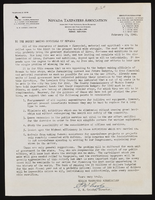Search the Special Collections and Archives Portal
Search Results

Letter from C. A. Earle Rinker to his mother, July 26, 1907
Date
Archival Collection
Description
Text
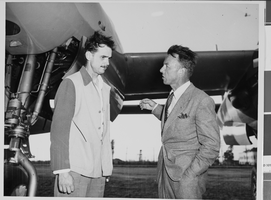
Photograph of Howard Hughes with Senator Harry P. Cain, Culver City, California, August 16, 1947
Date
Archival Collection
Description
Image
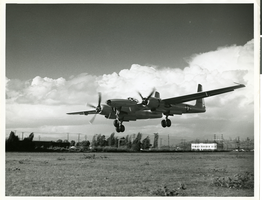
Photograph of Hughes XF-11 in flight, April 4, 1947
Date
Archival Collection
Description
Image
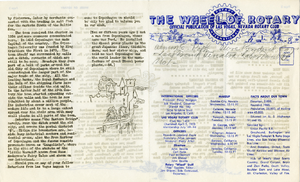
The Wheel of Rotary Las Vegas Rotary Club newsletter, March 16, 1950
Date
Archival Collection
Description
Text
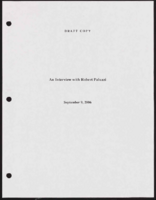
Transcript of interview with Robert Paluzzi by Claytee White, September 5, 2006
Date
Archival Collection
Description
Claytee White interviews Robert Paluzzi on September 5, 2006.
Text

Transcript of interview with Jack Cornell by Richard Fesler, February 18, 1979
Date
Archival Collection
Description
On February 18, 1979, Richard Fesler interviewed Jack W. Cornell (born 1918 in Manhattan, Nevada) about his experiences living in Nevada. The two first discuss historical buildings, including the Nye County Courthouse, and Cornell describes his family background and the different locations at which his ancestors lived. Cornell then talks about his experiences as an airplane mechanic for the Army Air Corps during World War II and the different countries he would visit during that time. The two also discuss the effects of the Depression, Cornell’s work in automotive body repair, and his recreational activities. Cornell also describes an experience in which he assisted an air escort for President Roosevelt, and he also describes when he witnessed one of the atomic tests. The interview concludes with Cornell’s thoughts on how the rural area in Manhattan has changed over time.
Text

Interview with Raymond Chester Harbert, April 3, 2006
Date
Archival Collection
Description
Text
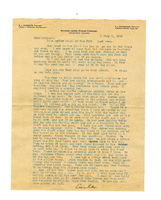
Letter from C. A. Earle Rinker to his mother, July 2, 1908
Date
Archival Collection
Description
Text

The Boulder Dam Las Vegas Rotary Club newsletter, April 29, 1926
Date
Archival Collection
Description
Text

